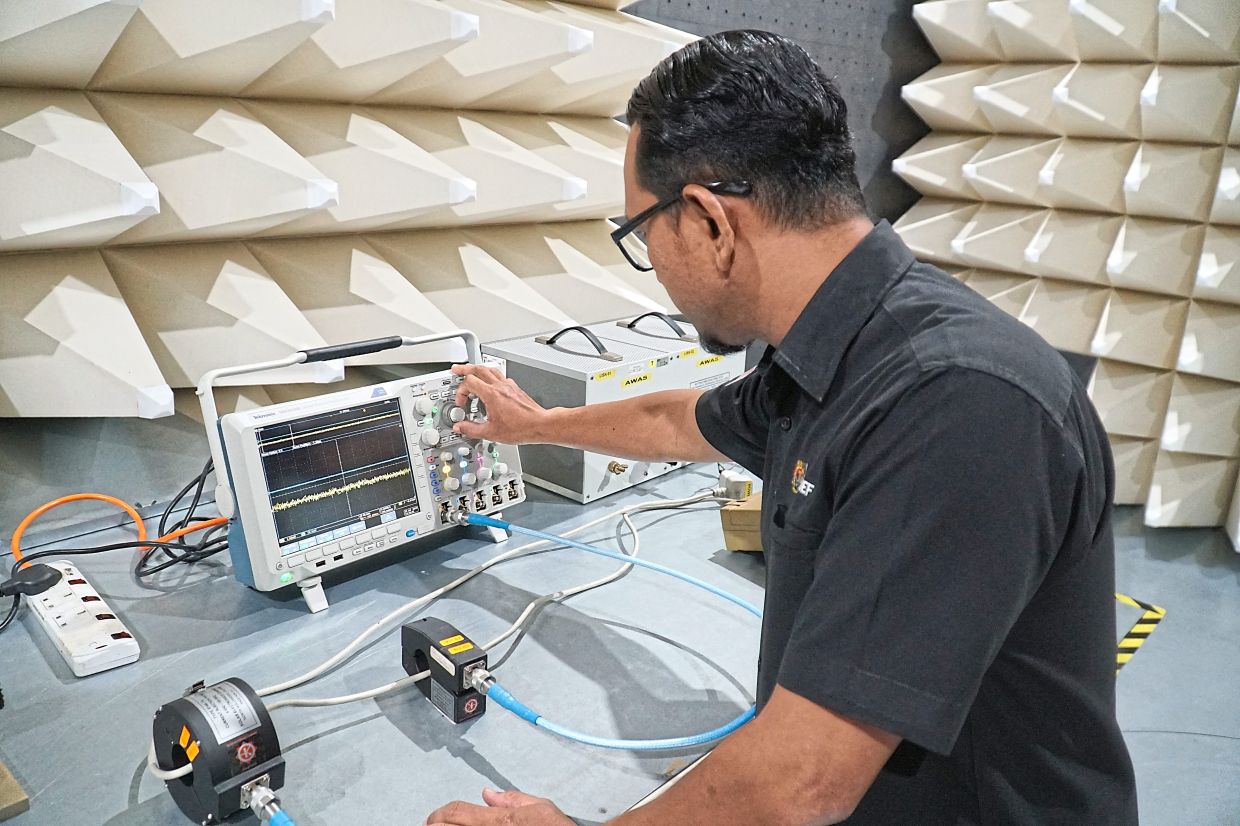IT was a covert operation straight out of a movie.
Under the watchful eye of Ukrainian President Volodymyr Zelenskyy, an army of long-range aerial drones was loaded into mobile wooden houses, ferried by trucks that stealthily crossed into Russian territory. The plan took almost two years to come to fruition.
Then, early last month at several undisclosed locations, the wooden homes’ retractable roofs opened. Swarms of Kyiv’s drones buzzed into the sky, striking airbases in Murmansk, Irkutsk, Ryazan and Amur in a series of bombing runs.
Images of the attacks quickly circulated and Ukrainian security expert Maria Avdeeva famously said: “This will be in (the) textbooks.”
Unsurprisingly, Russia responded swiftly – launching nearly 500 drones into Ukrainian skies to pound strategic military targets on the ground.
The Russia-Ukraine war underscores a new era of warfare, one increasingly defined by artificial intelligence (AI) and robotics. These technologies are not just complementary tools; they’re transforming the battlefield, driven by a philosophy to reduce armed personnel’s exposure to danger.
In other conflict zones – including Gaza and Sudan – drones and cyber warfare (used, for instance, to disrupt missile trajectories or communications) are becoming increasingly prevalent.
While conventional arms and manned vehicles remain critical, robotics and AI now represent a growing edge in military and security strategy – even in South-East Asia, where control over maritime zones, for example, is often a flashpoint.
Malaysia, too, is working to keep its defences in step with these shifts.
Alongside a recent RM12bil defence spending package – including purchases of Anka drones and missiles – the country is ramping up domestic capabilities in drone technology, cyber warfare, and stealth systems. Previously, it was reported that the ministry saw a 7.08% in increase in defence allocation under the 2025 Budget with RM21.13bil, up from RM19.73bil in 2024.
Experts say this upgrading push must also include a multi-domain taskforce model and a clear talent pipeline to ensure long-term sustainability and effectiveness.
A forward Stride
Far from the spotlight and aptly acronymised, the Science and Technology Research Institute for Defence (Stride) – a government agency based in Selangor – is at the heart of these efforts to enhance the capabilities of Malaysia’s armed forces.
Stride director-general Nor Azlan Mohd Ramli says the agency is looking to equip the military with robust AI systems and robotics for both aerial and ground operations.
“AI is being explored to improve intelligence, surveillance and reconnaissance (ISR), predictive maintenance, logistics optimisation, and decision-support systems,” he says.
Nor Azlan points out that Stride is also advancing autonomous platforms such as unmanned aerial vehicles (UAV) and unmanned ground vehicles (UGV) to minimise personnel risk and increase mission success.
“In addition, Stride is strengthening internal capabilities by establishing dedicated AI research units and implementing capacity- building programmes to equip our personnel with the skills required to design, deploy and manage advanced AI systems.”
As outlined in Malaysia’s Defence White Paper, Stride is spearheading efforts to achieve indigenous defence capabilities to enhance national security, self-reliance and technological sovereignty.
“Central to this effort is the development of a dedicated cyber force within the Malaysian Armed Forces, focusing on cyber threat intelligence, defensive and offensive cyber operations, and cybersecurity for operational technology,” Nor Azlan adds.
“We’re expanding our portfolio of advanced unmanned systems to improve agility and reduce reliance on imported platforms. This includes modular, AI-capable land platforms, AI-powered UAVs tailored to local environments, and autonomous maritime systems for mine detection and coastal patrols.”
And on preparedness against nuclear threats? A security insider put it simply: “We have the capabilities.”
Stronger circuitry
Stride is also focused on intelligence-gathering tech. Nor Azlan says the agency is working to strengthen cyberdefence and intelligence capabilities.
“We plan to collaborate with local universities and the Malaysia National AI Office (NAIO) to develop AI-driven cyber threat detection platforms and encrypted communication systems for secure operational connectivity.”
In the aerial domain, Stride is pursuing several R&D projects on UAVs for ISR, border monitoring, and tactical missions, all with integrated AI and autonomous functions.
This forms part of Stride’s broader vision of a self-reliant, agile and multi-domain-capable armed forces – able to counter threats across land, sea, air, cyberspace, and space.
“We are actively developing the integration of AI across military domains to enhance mission effectiveness and reduce operational risk. AI applications in ISR reduce the cognitive load on operators and support faster, more accurate decision-making,” Nor Azlan says.
He adds that Malaysia’s adoption of AI is grounded in ethics, as laid out in the National AI Roadmap (2021-2025) and aligned with global standards.
“Key principles include human oversight – ensuring critical decisions, especially involving force, remain under human control.”
Challenges remain, including talent gaps and institutional readiness. But Nor Azlan believes that with strategic alignment, ethical governance and international partnerships, Malaysia is on track to become a regional model for responsible and effective AI in defence by 2030.
The cog
Defence today is no longer business as usual; it demands a more dynamic policy cycle, says Dr Muhammad Danial Azman, deputy executive director at Universiti Malaya’s International Institute of Public Policy.
He says the building of a world-class cyberforce must begin by establishing cyberdefence as a fundamental pillar, alongside land, sea and air.
“The Defence Ministry should set up a Cyber Defence Command on par with Armed Forces Headquarters – with its own budget, training wing, and acquisition unit,” says Danial.
This command, he stresses, must have clear career pathways and rank structures to retain cyberoperators in long-term service.
“Reforms should also include a dedicated cybercadet programme, with commissioning courses in threat hunting, incident response, and secure coding.
“We need a permanent cyberrange at Pulada (Army Combat Training Centre) or (national research and development centre) Mimos to run live-fire exercises, red and blue team drills, and joint war games with traditional forces,” he says.
A cyberrange is a simulated environment which mirrors real-world cyberattacks and IT world infrastructure.
Danial also recommends partnerships with CyberSecurity Malaysia and PETRONAS Digital for staff secondments and intelligence sharing.
To grow the talent pipeline, Danial suggests embedding cybersecurity modules in SPM and matriculation syllabi, as well as introducing an accredited Bachelor of Science in Cyber-defence at public universities with compulsory internships at the Defence Ministry.
“Postgraduate scholarships linked to service commitments could also help build capacity in the new cyberdefence command.”
Vital requirement
AI and cyber capabilities are no longer optional, says Institute of Strategic and International Studies Malaysia’s cyber and technology policy programme director Farlina Said.
They are necessary.
“As cyber becomes its own theatre of war, AI-driven attacks can paralyse infrastructure and assets. This has been especially visible in Europe, where cyber tools are deployed against digital and physical infrastructure – or used to influence the information space.”
Farlina adds that to keep pace, Malaysia must modernise its armed forces in anticipation of current and future threat trends.
Danial agrees, noting that Malaysia continues to face non-traditional threats such as smuggling, piracy and hybrid coercion – requiring constant surveillance, adaptable littoral patrols and rapid air support.
Following the recent defence acquisitions like medium-altitude long-endurance (MALE) UAVs, Danial says it will help bridge gaps in maritime domain awareness, providing 24/7 ISR coverage over the exclusive economic zone.
“Littoral combat ships (LCS) can expand presence in shallow waters for anti-submarine, mine-clearing and boarding ops.
“FA-50 light fighters can support air policing, pilot training and fast-response strikes.”
Danial says these align directly with Malaysia’s need for layered deterrence and maritime security.
However, he stresses that there are several policy innovation challenges that need to be immediately considered, such as the lack of an unmanned-manned integration doctrine for combined UAV-ship-air task groups.
“Existing SOPs are still oriented around Cold War-style service- centric operations. There are also personnel bottlenecks. Pilot and sensor-operator training pipelines for MALE UAVs and FA-50s currently cannot scale at procurement rates. Naval crews are unfamiliar with the new LCS mission systems and maintenance requirements.”
The challenges also include issues concerning sustainment and supply chain, in which spares provisioning and commercial- contract arrangements have not been overhauled to support rapid deployment cycles.
“Over-reliance on foreign OEMs (original equipment manufacturers) for after-sales support risks mission pauses in high-tempo scenarios.”






